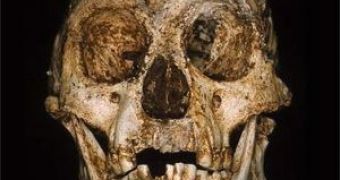Recently, a large team of researchers has made the most wide-ranging, multidisciplinary assessment, through a comprehensive and convincing study to prove that the small skull discovered in Flores, Indonesia, in 2003, does not belong to a new species of hominid.
Most likely, the skull belonged to a person suffering from a genetic condition known as microcephaly (meaning literally "small head" in ancient Greek).
"It is simply fanciful to imagine that this fossil represents anything other than a modern human." said Robert R. Martin, PhD, Curator of Biological Anthropology at the Field Museum and lead author of the paper. "The existence of a species of small-brained dwarf humans just 18,000 years ago on Flores is a mere fantasy," Martin says.
The study team includes experts on scaling effects of body size, clinical and genetic aspects of human microcephaly and in stone tools. Four separate research teams had recently concluded that the Flores hominid is far more likely to be a small-bodied modern human suffering from a microcephaly than a new species derived from Homo erectus.
The researchers realized that the brain of the Flores skull (at 400 cc, less than one-third of the normal size for a modern human of about 1600 cc) is simply too small to fit anything previously known about human brain evolution. There were unearthed the remains of 8 individuals, but only in one is known the brain size. All the individuals were small bodied, but there were no further studies about this issue, and they may belong to a pygmy population.
In fact, even today, in Flores survive remnants of an archaic population of the island, the Rampasasa pygmies, probably the original population before the Malayic speaking populations entered the island.
The pygmies are an ancient race, related to Asian Negroid race (like Papuans, Melanesians, Australian Aborigines, groups from South India) and groups of pygmies area also even today found in Philippines, Malacca, Equatorial Africa. Pygmies in Asia and Africa should not be seen as dwarfed populations, but as an all related ancient race.
The new research proved that the brain of Homo florensis is simply too small to have been derived from H. erectus by dwarfing, as previously claimed. In fact, the size of the brain fits with modern microcephalics.
Microcephaly can be determined by more than 400 different mutant genes and a wide range of corresponding syndromes. Most syndromes involve pronounced deficits ("low-functioning microcephaly") and the affected individuals die early, but some have mild effects ("high-functioning microcephaly"), permitting survival into adulthood and a surprising degree of behavioral competence in certain cases. Microcephaly is often associated with a small body, but not always.
The skeleton with microcephaly from Flores was of an adult, so it must be assigned to a "high-functioning" microcephalic. Comparisons with skulls and brain casts of modern "high functioning" microcephalics showed a match. The large teeth ("megadonty") in fossils are in fact normally associated with microcephaly.
Another area of controversy concerns the stone tools discovered in association with the Flores fossils. That kind of sophisticated stone tools associated with the fossil from Flores had only been reported for our own species, Homo sapiens. Some have claimed continuity with tools from Mata Menge on Flores that are purportedly 800,000 years ago, which is simply implausible. "Nobody has even claimed cultural continuity in stone tool technology over such a long period (800,000 to 18,000 years ago)," said Dr. James Phillips, PhD, Departments of Anthropology at the University of Illinois at Chicago and the Field Museum.
"To do so ignores the significance of tools found with the LB1 skeleton that were made with the advanced prepared-core technique, otherwise confined to Neanderthals and modern humans."
"There has been too much media hype and not enough sound scientific evaluation surrounding this discovery," Dr. Martin concluded. "Science needs more balance and less acrimony as we continue to unravel this discovery."

 14 DAY TRIAL //
14 DAY TRIAL //